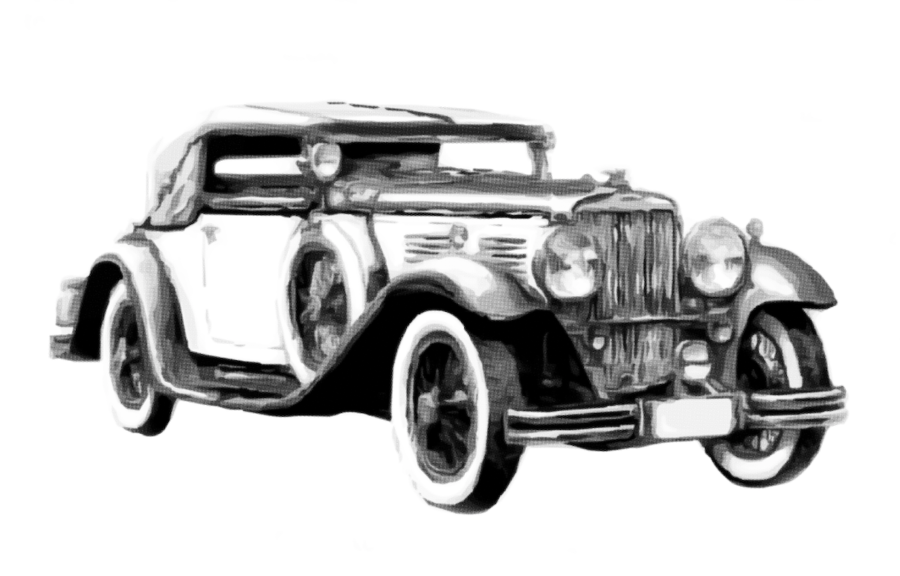From Auto Showrooms to Movie Theaters: The History of Van Ness Avenue
On February 17, 2019, the AMC Van Ness Theater on Van Ness Avenue and O’Farrell Street closed for good. Every time I drove past the movie theater for the next two weeks, I was immediately filled with nostalgia. I remembered the stale smell of the walls as I waited to get my tickets to see “Wall-E” on a rainy day in 2008. Exactly 10 years later, my friend and I saw actor Tom Hardy filming the movie “Venom” on that exact block and then proceeded to see the movie in the AMC Van Ness theater. These unique and local experiences created on Van Ness and O’Farrell made it my favorite movie theater growing up. So what was I supposed to do when it closed? Go to a movie theater as commercialized and bland as the downtown Metreon?
My love of the Van Ness movie theater speaks to something larger than a simple opposition to monotonous downtown theaters. What gave the AMC Van Ness Theater and the building that housed it (called the Don Lee Cadillac Building) their famous character was the grand design of the interior. While frequently marveled at, the importance of that building, the history of the street, and its impacts on current-day San Francisco are more than often neglected.
I felt the need to pay my respects to the Van Ness movie theater by learning more about its history. However, after beginning my research, I soon realized that the Don Lee Cadillac Building was only a small part of the exceptional, and forgotten, history of Van Ness Avenue.
Driven by my determination to learn about this history, I reached out to architectural historian William Kostura. Kostura, at the request of the San Francisco City Planning Historic Preservation Department in 2010, drafted a survey of 112 buildings along Van Ness Avenue that could qualify for official historic preservation by the city of San Francisco. His survey concluded that only about two-thirds of the considered buildings, including the Don Lee Cadillac Building, qualified for historic preservation.
In an interview with The Urban Legend, Kostura started by saying that the interior of the Don Lee Cadillac Building was not unique. In the 1920s, dozens of similarly styled buildings lined Van Ness Avenue. These large and lavish spaces were built to serve as auto-showrooms where customers could both marvel at the cars and the architecture of the building. A few years later, Van Ness Avenue, which by then was adorned with everything from auto-showrooms to auto-repair shops and parking lots, was rightfully named “Auto Row” by locals, tourists, and auto businesses. Auto Row encompassed about 22 blocks of Van Ness Avenue and contained the only major concentration of auto-related buildings in San Francisco.
But, what would prompt the auto-industry to move to Van Ness Avenue? In short, it was good timing. After the 1906 earthquake and fire, downtown San Francisco was destroyed and the City was in need of an “acting” downtown while the real downtown was rebuilt. Van Ness Avenue was the perfect place. Before 1906, Van Ness was a mostly residential area with a few commercial clusters. During the infamous earthquake and fire, all of Van Ness Avenue south of Filbert Street was dynamited to create a fire-break, consequently destroying the Van Ness Avenue of the 19th Century. As a result, the former downtown businesses all moved to and built on top of the remains of Van Ness.
In around 1908, however, downtown was successfully rebuilt and all of the businesses migrated back, leaving Van Ness and its buildings vacant. These available commercial locations drew the attentions of many auto dealers, who were previously clustered around the smaller buildings on Golden Gate Avenue. Various auto-brands began to use the old business buildings as auto-shops.
The popularity of Van Ness Avenue during the early twentieth century was astounding; between the years of 1909 and 1929, about 90% of the nearly 300 auto-shops in San Francisco were built on the street. Each General Motors (GM) brand had its own showroom decorated to the same lavish extent as the interior of the Don Lee Cadillac Building. Even Charles S. Howard, owner of the famous 1930s racehorse Seabiscuit (Kostura compared the horse’s fame at the time to that of LeBron James), owned multiple Buick showrooms on Van Ness.
But during the 1970s and 80s, many of the U.S. auto-brands Van Ness housed went out of business as the international auto industry started to gain momentum, forcing almost all of the surviving brands to leave Van Ness street in search of a new “Auto Row”. As a result, many remaining auto-shops and showrooms were torn down or repurposed.
Evidently, AMC Theatres recycled the Don Lee Cadillac Building in 1998 in order to accommodate the movie theater. The well-preserved interior of the Van Ness Movie Theater, I believe, was a subtle nod to the street’s grand history and gave the theater its memorable character. However, in the past decade, Kostura noted, modern versions of auto-shops, specifically auto-showrooms, have slowly reemerged on Van Ness Avenue. For example, Tesla now owns an auto-showroom in what used to be a Chevrolet dealership and the old Packard showroom is now owned and used by British Motors.
While I will always slightly resent AMC for closing my favorite movie theater, I am grateful that it gave me the opportunity to engage with part of San Francisco’s forgotten history, even if it was for only an hour and a half movie.

